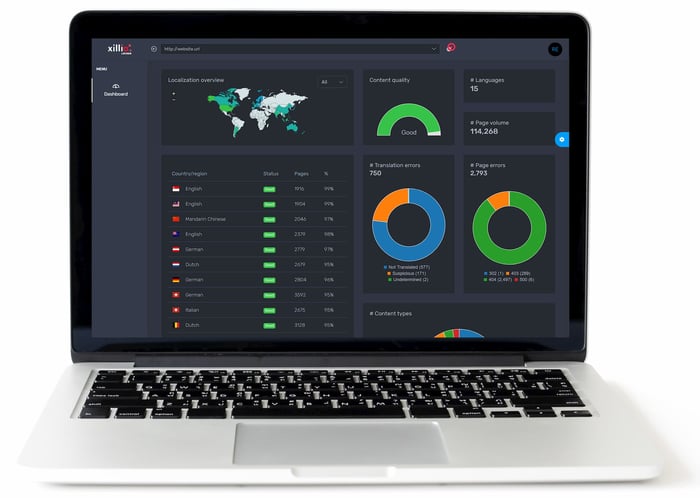Finally, an easier way to ensure the best UX for your multilingual website
by Yuka Nakasone, on Sep 22, 2021 12:30:04 PM
This blog is part of a series of three articles written by Yuka Nakasone, an international growth strategist, and localization industry expert. A few weeks ago, Yuka caught up with Rikkert Engels, CEO, and founder of LocHub, to discuss globalization trends, issues facing localization professionals, and industry innovation. This first article explores how even the largest multinationals often have gaps in both technology and processes that contribute to a poor user experience on multilingual websites
Did you know it’s likely that your multilingual website generates around 200 errors every week? This number may be even higher depending on the number of web pages you have. According to LocHub’s research, over 80% of global websites are filled with translation and localization mistakes, lack consistency, and have broken links and empty pages. As time goes by, these errors accumulate without you even knowing it, which negatively impacts the user experience of your website.
Rikkert Engels, CEO, and Founder at Xillio and LocHub developed an innovative solution by filling in the gap that no one has before. Engels put his focus on the processes happening between the CMS and web publication which were previously left unmonitored. He realized that everyone was skipping an important QA step, leaving their websites unoptimized for local searches and therefore not visible enough to target audiences across different countries.
Why multilingual UX matters
Believe it or not, it takes seconds for users to evaluate whether or not your website is worth their attention. Overwhelmed with online content, they are not eager to waste any time on web pages that don’t offer a clear value proposition, are not visually pleasing, not easy to navigate, and overall - feel unengaging.
As you may know, Google’s algorithm relies on more than 200 ranking factors and quality UX is one of the top factors. This means that the better the experience you build for your users is, the higher your content will rank.
However, when you’re trying to create a great user experience for an international audience, things tend to get a bit more complicated. Engels believes the industry often oversimplifies localization in that sense. It’s not enough to translate the content and adapt it while bearing in mind cultural nuances and specificities. You also need to see the bigger picture and think about the entire experience.
There is something that all users have in common: they care about the functionality of the website they’re interacting with, and they expect this interaction to be seamless and personalized. This is where LocHub steps in.
![]()
How LocHub solves a crucial issue in localization
Imagine you could quickly scan for and fix website mistakes that are hurting your multilingual SEO and actually include localization into your global content publication process. Well, you don’t have to fantasize anymore because that’s exactly what LocHub enables you to do. Regardless of your chosen martech stack and CMS, LocHub provides you with a complete view of your global web properties. You can test your localized content before it gets published, increase your SEO performance, and ensure a better UX for your audience.
When you think about it, it’s completely normal to have a testing phase in software development before launching. So why would you ignore this QA step in localization? Yet, many localization managers are so focused on getting the content live that they miss validating the quality right before publication. Plus, they’ve never had the proper tools to do so.
Then what happens? Potential issues in rendering content, as well as the limited access rights to staging environments, create problems for webmasters and marketing professionals who are left with a low-quality website that’s filled with avoidable errors.

Single dashboard, multiple benefits
LocHub offers a user-friendly dashboard with a localization scoring system that points out areas of improvement. More specifically, it looks at the “7 deadly sins of localization”, i.e. geographical targets, language consistency, language quantity, localization experience and reference, content duplication, translation URLs, and search-friendliness. It is a powerful tool that allows you to insert the URL of your website and see exactly what you need to do for better online visibility and increased UX quality.
LocHub won LocWorld’s 10th Process Innovation Challenge and it is designed to help localization managers, marketing professionals, SEO experts, webmasters, as well as marketing and translation agencies.
To find out more, please visit the LocHub website or ask for a free report to see what you can expect.
If you are interested in learning new strategies to boost productivity and transform multilingual content workflows into a customer experience value chain that delivers real business value. Meet the localization experts at the LT-Innovate Value Cast on Sept 29th, where you will learn about strategies and best practices to boost productivity and accelerate business value for your stakeholders.
----------------------------------------------------------------------------



